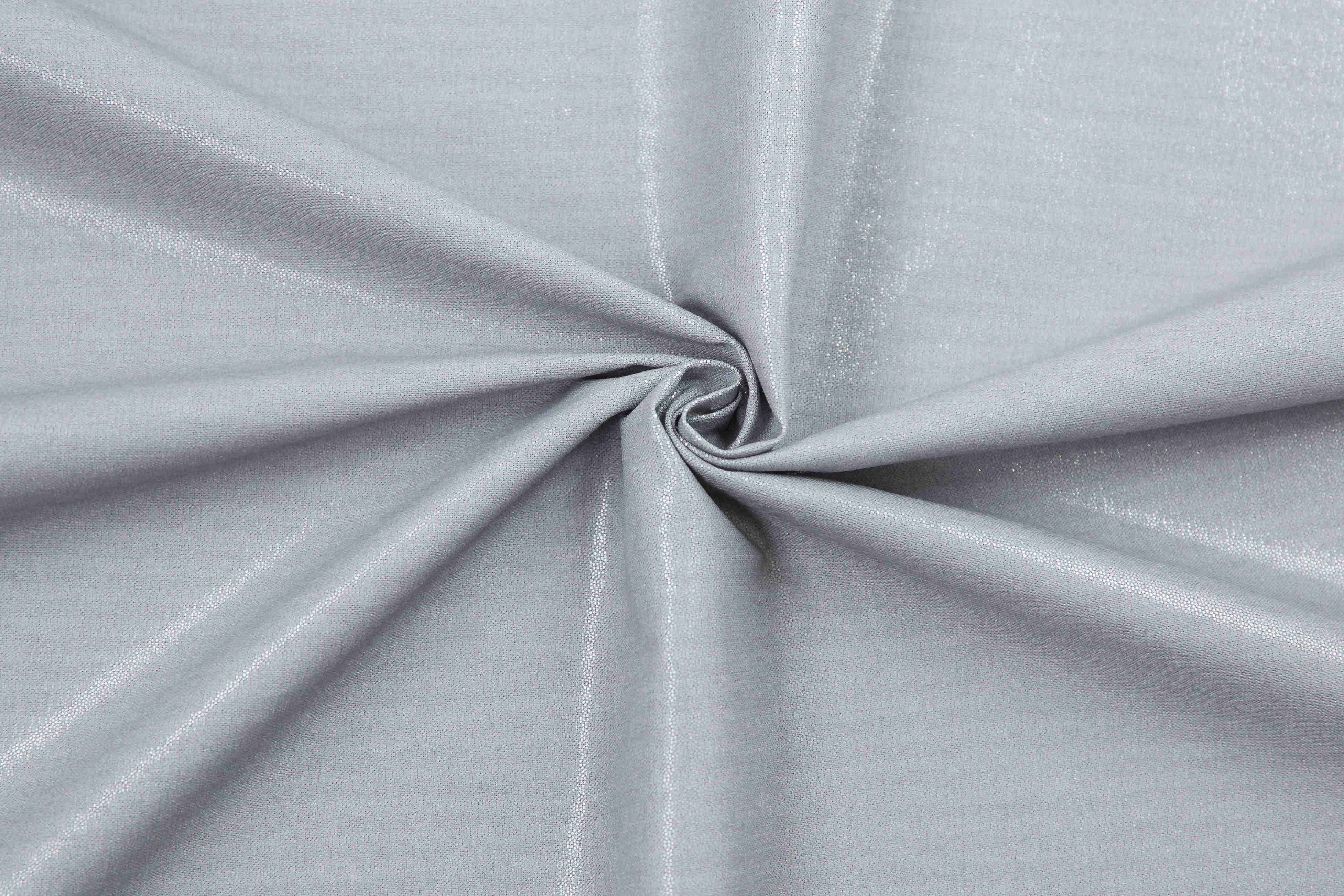The selection of our interlining by garment accessories factory is basically as follows: according to the fabric, clothing varieties and design requirements, and the performance of different parts of clothing. It seems that it is a matter for garment factories how to match reasonably, but it is also an important issue for adhesive interlining factories how to develop new customers. To choose an appropriate adhesive interlining, we should not only pay attention to the similarity of shrinkage between clothing material and interlining, but also understand the characteristics of clothing material and the appearance performance required by clothing.

Functionality
The performance of interlining should match that of garment fabric. From the perspective of clothing material selection, fabric is the leading role, interlining is the supporting role, but it directly affects the wearing effect of clothing, is the "skeleton" and essence of a garment, and should not be simply understood as "foil". The functions of modern interlining can be summarized as follows: giving the garment beautiful curve and shape; enhancing the straightness and elasticity of the garment, enhancing the three-dimensional sense; improving the drapability of the garment and the handle of the fabric, enhancing the comfort of the garment; enhancing the thick feeling, plump feeling and heat preservation of the garment; preventing the deformation of the garment, making the garment keep its original shape after washing; strengthening the local part of the garment 。 The characteristics of the fabric should be fully considered when choosing the interlining. There are mainly three aspects as follows:
1. For heavy fabrics or fabrics reinforced with warp and weft, lining cloth with small mesh and high coating amount is generally selected to ensure sufficient peeling strength after bonding.
2. The lining cloth with high mesh number and less coating amount should be selected for light and thin fabrics to avoid glue penetration during bonding and ironing. On the premise of ensuring the bonding quality, the temperature coefficient of lining cloth should be appropriately reduced in the bonding process, which can not only save energy consumption, but also obtain better hand feeling, and solve the yellowing phenomenon caused by high temperature in the bonding process. Some lightweight fabrics need the same or similar color interlining to match, so as to avoid color penetration.
3. Elastic fabric should choose elastic lining to match with it (Note: the elastic direction of lining should be consistent when bonding), so that the clothing is not easy to blister.
Consider the use of clothing. Some need to be washed clothing should choose washable lining. And it should be noted that: in China, the cleaning of clothing is mainly water washing, and the adhesion of interlining will be greatly reduced in the process of washing. So must choose to have enough peel strength of adhesive interlining. According to GB / t2664-2001 and GB / t2665-2001 standards, the peel strength of the covered fusible interlining should be greater than or equal to 6N / 62.5px × 250px, and the size change of interlining after dry cleaning and washing should not be too large. If the shrinkage is too large, it is inconsistent with the shrinkage of fabric, which will affect the beauty of clothing. When sewing clothes, choose the interlining which is consistent with the heat shrinkage of the fabric, otherwise there will be wrinkling and pleating.
Characteristics of fabric fiber
1. Natural fiber: it has high moisture content, and after absorbing water, it is easy to cause changes in size and appearance. In general, after dehydration, natural fibers can return to their original state.
2. Wool: the change of size has a significant relationship with the moisture content. After absorbing water, the size of wool will increase a lot, and it will shrink after drying, resulting in clothing deformation. Therefore, when selecting interlining, the fabric must be able to change with the size, and pay attention to the control of moisture content in the bonding process.
3. Silk: it is called heat sensitive fabric. Pay attention to the surface changes (such as smooth surface) caused by heat and pressure. Therefore, high temperature, high pressure and steam must be avoided as far as possible when bonding. Especially for the fabric with satin texture, the bonding lining with very small hot melt adhesive should be selected.
4. Cotton: it has high heat resistance and good recovery ability under steam, so the cotton cloth is relatively stable in the process of hot-melt bonding. However, if the cotton cloth is not shrinked, it usually has a higher shrinkage. Therefore, when selecting interlining, we must pay attention to the similar shrinkage.
5. Flax and flax fabric: it is usually difficult for flax fabric to get a strong adhesion, so special attention should be paid to the adhesion method to obtain a certain adhesion fastness.
6. Synthetic fiber: it is made of polyester and polyamide. It is not affected by water damage. However, it is difficult to eliminate the crepe during heat setting. Therefore, it is necessary to process the adhesive interlining at a temperature lower than that of heat setting.
7. Acrylic (artificial wool) fiber clothing, must choose low-temperature hot-melt adhesive interlining, pay attention to transport just finished hot-melt light pressure, prevent adhesive parts deformation.
Characteristics of fabric structure
In the selection of adhesive lining, in addition to the handle, there are many other factors to pay attention to
1. Thin and translucent fabric
For example: Barry yarn, snow yarn silk, georgette yarn, flash fabric, etc., when bonding this kind of fabric, the following quality problems often occur: glue penetration, cloud twist or color difference appearance. In the selection of adhesive interlining, attention should be paid to the difference of color, try to use the adhesive interlining with small rubber particles. In case of dark fabric, try to use the colored rubber particles interlining, so as to avoid the color difference of reflection and flash.
2. Elastic fabric
For example: elastic knitted fabric, in the selection of adhesive lining, should choose the lining with the same elasticity, not only consider the warp elasticity, but also pay attention to the consistency of Weft Elasticity, otherwise the clothing is easy to produce deformation.
3. Smooth fabric
For example: satin, taffeta and other fabrics with smooth surface, we must choose some lining with small rubber particles and strong adhesion.
4. Surface treated fabric
For example: the style features of the surface of seersucker and crepe de Chine are easily removed by the pressure during bonding processing, so the lining with low pressure bonding should be selected. Another example is crepe velvet, velveteen, corduroy, seal velvet, mouse velvet, etc. the surface fur is easy to damage the style due to pressure, especially when choosing interlining.
Selection of adhesive lining base cloth
There are woven, knitted and non-woven fabrics in the base cloth. From the requirements of wearing, the following points should be paid attention to in the selection:
1. Handle, thickness and stiffness
When the interlining is bonded, the hot-melt bonding has a hard handle. When choosing the appropriate handle, we must consider the different stiffness of different parts of the clothing. In the selection of non-woven base cloth, we should pay attention to whether there will be hard and unsuitable handle after heat bonding.
2. Dimensional stability
The adhesive interlining cloth needs to keep enough stability after water cleaning or dry cleaning.
3. Directionality
The Interlinings of suits need to be soft in the up and down direction (warp direction) and strong in the horizontal direction (weft direction). Most woven, knitted or non-woven base fabrics have different warp and weft characteristics. Therefore, when selecting base fabrics, we must also consider whether they can keep consistent with the fabric.
4. Following ability (following fabric characteristics and ability)
The warp direction of adhesive interlining should match the warp characteristics of fabric. The interlining should be lighter and thinner than the fabric. It is the fabric that drives the interlining, not the fabric that follows the interlining.
Landline:0513-86679886 0513-86679096
Fax:0513-86674980
Mailbox:dishun001@163.com
Website:www.ds-interlining.com
Address: building 18, CAITONG Science Park, 189 Qingnian East Road, Nantong City, Jiangsu Province
